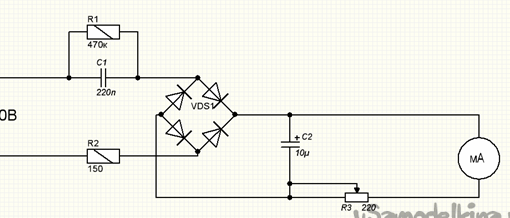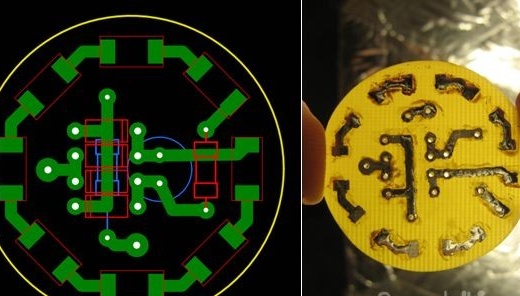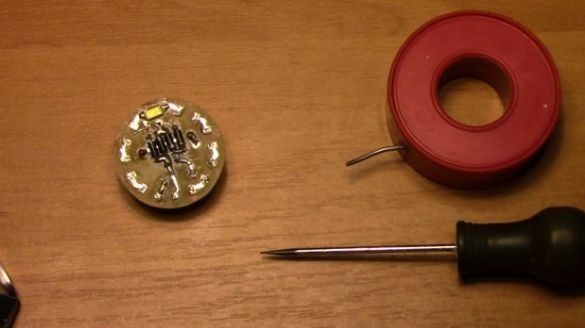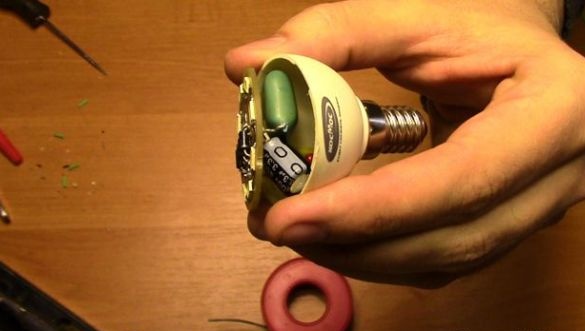For the construction we need:
- part of the lamp type "housekeeper", the one with the base;
- LEDs 5630;
- 4 diodes 1n4007;
- electrolytic capacitor from 3.3 uF;
- resistor R1 - 470k, 0.25 watts
- R2 resistor - 150 ohms, 0.25 watts
- resistor R3 - about it later.
- capacitor type K73-17 with a capacity of 0.22 uF and a working voltage of 340 V;
The circuit is simple with a quenching capacitor.
LEDs in the amount of 8 pieces.
Scheme for selecting capacitor capacitance.
Adjustable resistor R3. He set it to maximum resistance before turning it on, so that the arrow of the device does not go off scale. Then he minimized it. Capacitor C2 with a voltage of 340V. During the tests, I set 10 microfarads, but because of the size, he did not fit into the case, set it with a rating less. Why so much stress? This is in case of an open circuit with LEDs. Since the voltage will jump to a voltage higher than the AC network by 1.41 times (230 * 1.41 = 324.3V).

Trying capacitors with different capacities, I got approximate results.

The current can be calculated by the formula:
Where "I" is the current of the LEDs in amperes.

Or according to a simplified formula:

I was guided by measurements carried out on a test circuit with a milliammeter.
The board was made using LUT technology. SMD LEDs
The board in lay 6 version is attached
We poison the board, drill holes and trick.

We solder diodes, LEDs, resistor R1, capacitor C2.
The board is mounted in the basement of the case.
The diameter of the housekeeper's case is 38 mm, the board is 36 mm.
Capacitor C1 is soldered by a canopy to resistor R1. Again, due to housing limitations. Resistor R2 is removed from the board and acts as a "brace". Due to its board tightly pressed against the body.
Solder the resistor and wire to the base.
The first inclusion was made through a light bulb. The lamp consumption was 7.45 watts. It is not possible to measure by the luminous flux, but by eye more than 3 watts (when compared with the adjacent purchase).
The circuit has no galvanic isolation from the network. Be careful when experimenting and operating. Also use caution when installing the lamp. Mounting with the circuit breaker open.
The lamp has been working for about a year and a half with constant on / off.
On the video, you can see everything in detail:





